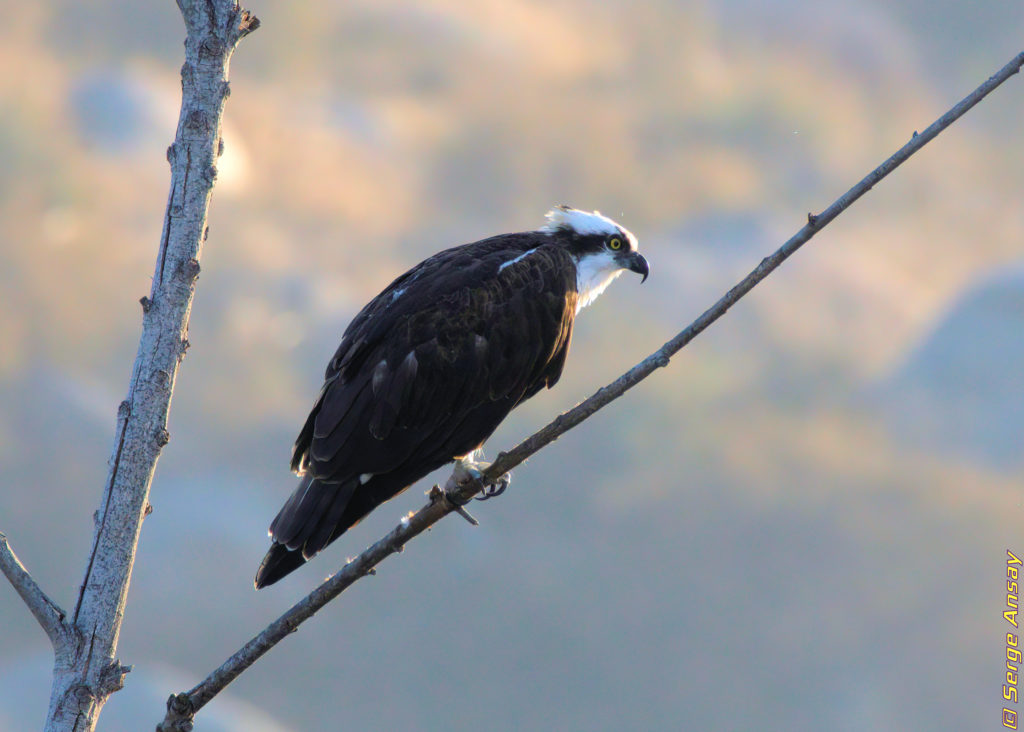This series of pictures was taken just last Wednesday. I had gone hiking in the morning around lake Hodges, and on the trail, met an older gentleman with a serious camera and lens, so it was inevitable that we talk. He asked me if I saw anything interesting. So I mentioned the belted kingfisher I have been trying hard to get good pics of, but which keeps avoiding me. Then I mentioned an osprey , which I had seen while back which was too far to get good pictures. He immediately told me about this one which sits on a dead tree up that trail along the lake shore.
So thanks to this friendly colleague photographer (thank you Alfred, that was a great tip :-D) I have the pleasure to share with you this series. I happened to come on the side of this osprey and started taking pictures. And, to my amazement, the osprey started throwing up like he had eaten something that didn’t agree with him. Anyway, you can see it in the first 10 pictures of this series.
I am not sure what it was that triggered this vomiting session. But he got over it, and, at some point as I was trying to get better pictures, this osprey decided he had enough with me getting too close and flew away.
The osprey is a bird of prey, which eats almost exclusively fish. You can easily find a lot of pictures of this bird taking flight with a fish in its claws. Unfortunately I haven’t been able to catch such a sight.
According to some articles the osprey ability to catch fish is the result of many evolutionary traits. Here is the list:
- The claws have a reversible outer toe that allows them to grasp with two toes in front and two behind.
- There are small spikes under the claws to help hold on to the fish.
- Their vision is adapted to see fish under the water surface from an altitude of 10 to 40 meters.
- Their eyes have a special eyelid, called a nictitating membrane, which allows them to see underwater when diving.
- They have closable nostrils to keep water out when diving.
- Their feathers are oily to prevent getting waterlogged.
- Their wings have an M-shaped bend which allows them to life heavier weights than other birds.
And regarding this last item, to get an idea of the effort the osprey has to make, I recommend you watch this excellent slow-motion video.

















Great Photos! Love the contrast between the breast and the wings 🙂 And that beak is not half scary!
Thank you very much Michael.
I loved working on this series because, as you pointed out, the original photographs were more detailed than usual, better lighting and proximity. That was a good day 😀